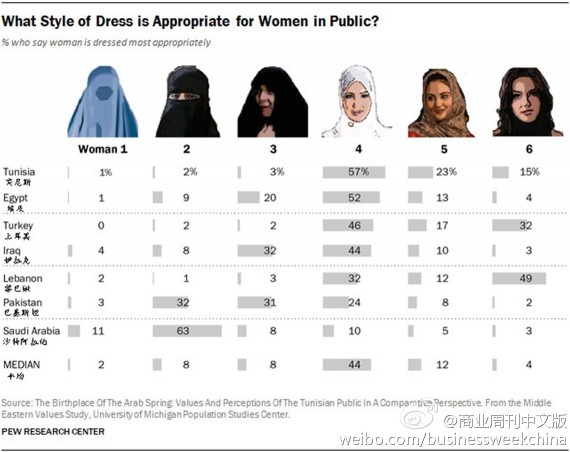Fashion Victims
Earlier this year, survey researchers at the University of Michigan questioned citizens of seven Muslim countries about how they think women should dress. They asked both men and women to select from among five styles of hijabs, or veils, or whether women should wear no hijab at all. They tried to reduce a multifaceted piece of clothing, embodying a set of complex decisions, to a few simple choices, as shown below.

For one thing, the meaning of the hijab varies widely across the Muslim world. In Egypt, veiling is a personal choice, and can be an expression of virtue, personal style, or resistance to secularism, according to anthropologist Saba Mahmood (Politics of Piety, 2004). In Iran, where the hijab is mandatory, hijab styles are a sign of resistance against an Islamic government that sees itself as the guardian of women’s bodies.
In addition, the hijab is not merely one piece of clothing, and encompasses many different styles. The intense competition among women’s wear designers, Islamic fashion shows, and glossy hijab magazines showcase these variations—and their wide appeal for Muslim women.
What this tells us is that people’s way of dressing is shaped by their social context, as the anthropologist Lila Abu-Lughod reminds us in her 2013 book Do Muslim Women Need Saving? After all, American women don’t live in a world of free choice either. The “tyranny of fashion,” in other words, is a challenge for women in many parts of the world.
